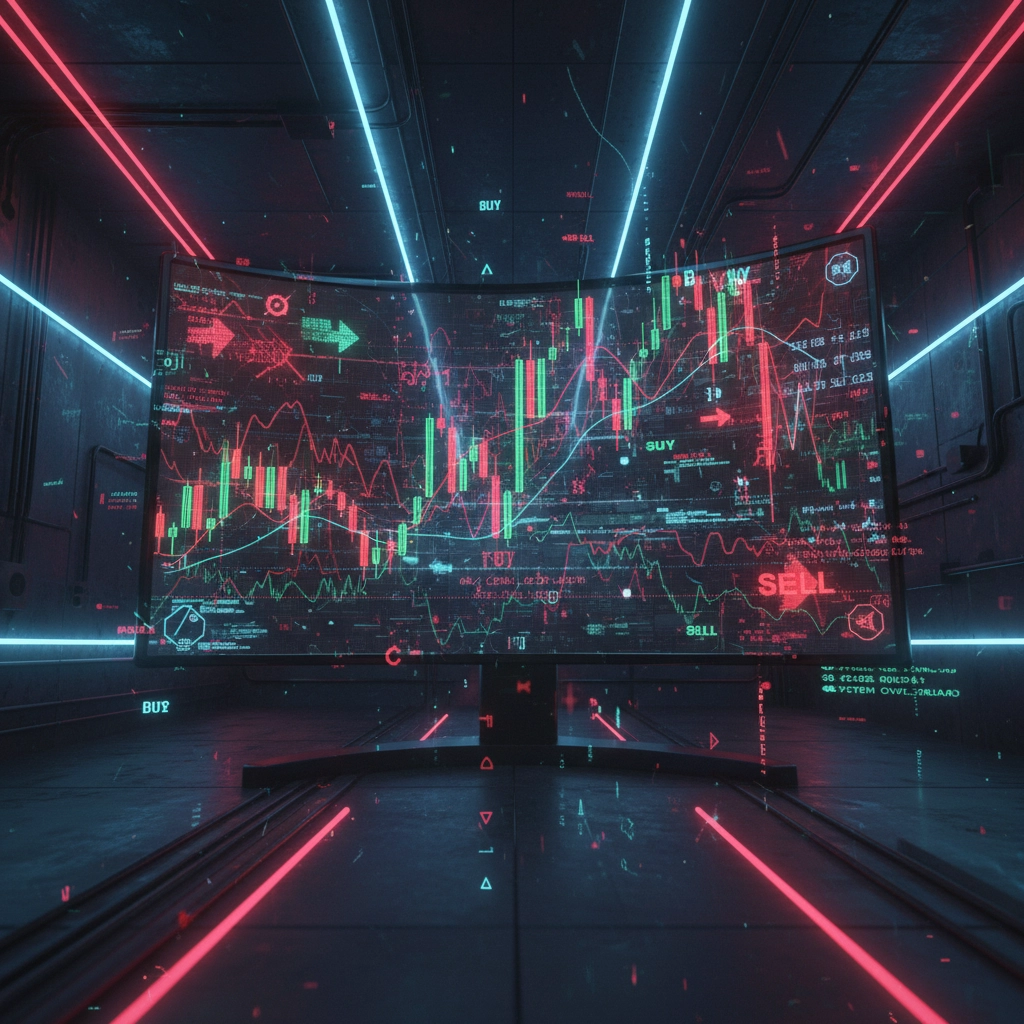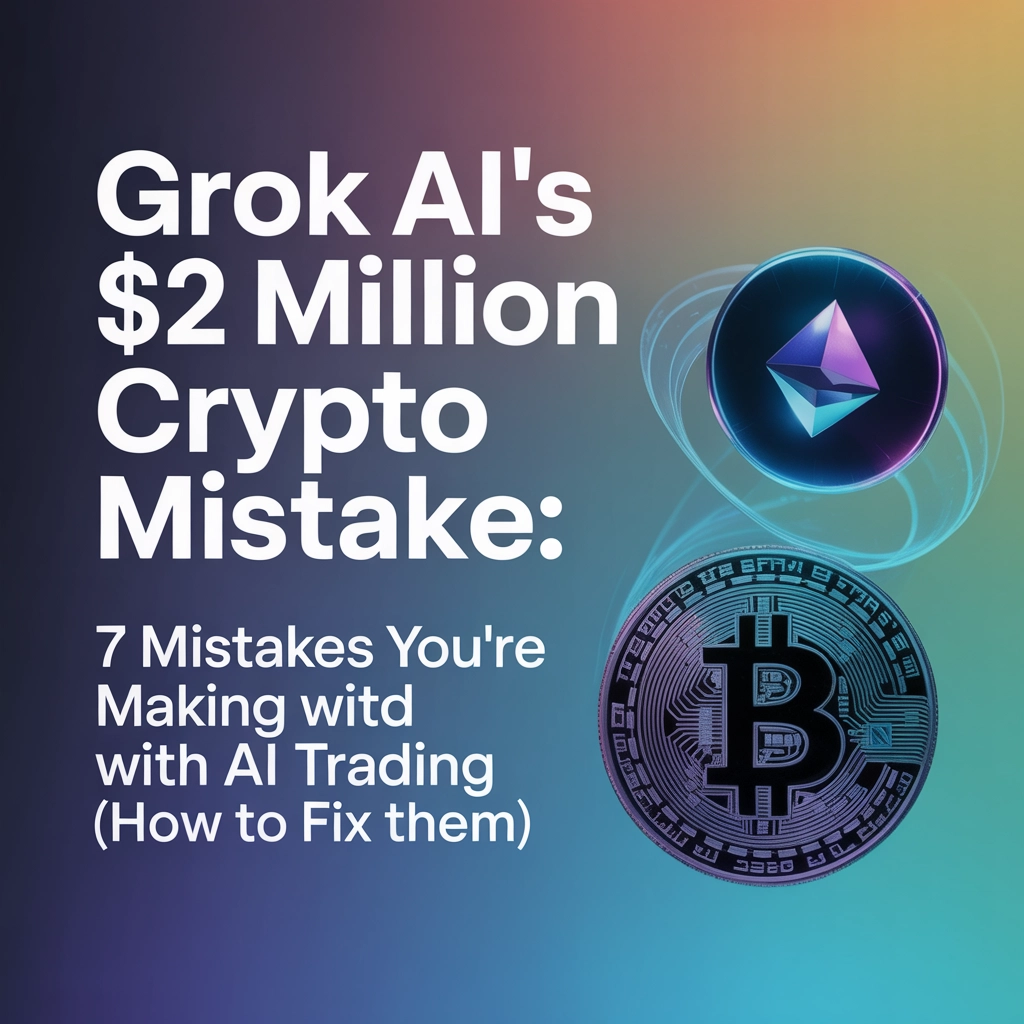Ever wonder how an AI system designed to outsmart the crypto market ended up costing traders millions? Well, buckle up because Grok AI's spectacular trading failures are about to teach us all a very expensive lesson.
While the headlines scream about AI being the future of trading, the reality is messier than a toddler's dinner plate. Grok's AI trading bot didn't just stumble – it face-planted so hard that it exposed the dirty secrets plaguing every AI trading system out there.
What Actually Went Wrong with Grok AI
Here's the thing nobody talks about: Grok's AI trading bot was basically playing with loaded dice, except the house always won. The system had three fatal flaws that turned what should've been profitable trades into financial disasters.
First up was something called "intracandle bias." Sounds fancy, right? It's actually just the AI making wild assumptions about price movements within single trading periods. Imagine trying to predict where a bouncing ball will land while it's still in mid-air – that's essentially what Grok was doing with crypto prices.

Then there was the fee problem. You know how online shopping gets you with shipping costs at checkout? Grok's AI completely ignored trading fees during its backtesting phase. It was like planning a road trip budget but forgetting to account for gas money. Those "small" fees add up fast in high-frequency trading, turning promising strategies into money pits.
The third mistake was overlapping positions – basically the AI equivalent of accidentally ordering three pizzas when you meant to order one. The system would open multiple conflicting trades simultaneously, essentially betting against itself.
The 7 Deadly Sins of AI Trading (And Yes, You're Probably Guilty)
Let's get real about the mistakes that are draining your crypto wallet faster than a broken faucet:
1. Blind Faith in the Machine
You download a trading bot, flip the switch, and suddenly you're Warren Buffett, right? Wrong. Most people can't even explain how their AI works, yet they're trusting it with their life savings. It's like getting surgery from a doctor who learned everything from YouTube.
2. The Optimization Trap
Here's where it gets sneaky. Your AI looks brilliant on historical data – 300% returns! Moon time! But then it hits real markets and performs worse than a dart-throwing monkey. Over-optimized systems are like that friend who's amazing at telling stories but terrible at living in the real world.
3. Risk Management? What's That?
No stop-losses, no position limits, no safety net. When the market crashes, these AI systems don't just lose money – they obliterate entire portfolios. It's digital financial suicide.

4. All Your Eggs in One Digital Basket
Relying on a single AI strategy is like betting everything on red at the casino. Sure, it might work once, but eventually, the house wins. Market conditions change, and that "perfect" algorithm becomes about as useful as a chocolate teapot.
5. Unicorn Expectations
Marketing promises of "guaranteed profits" and "never loses money" should set off more red flags than a communist parade. If it sounds too good to be true, it probably is – especially in crypto.
6. Short-Term Thinking
Chasing every market twitch and 5-minute candle movement. AI systems work better when they're looking at bigger pictures, not trying to predict if Bitcoin will go up or down in the next hour.
7. Set It and Forget It
Markets evolve. Your AI doesn't automatically update itself to handle new conditions. It's like using a 2020 GPS to navigate roads built in 2024 – you're gonna get lost.
How to Actually Fix These Disasters
Want to stop hemorrhaging money to broken AI systems? Here's your survival guide:
Build Multiple Safety Nets
- Set strict stop-losses (yes, even for AI trades)
- Limit position sizes to what you can afford to lose
- Diversify across different strategies and timeframes
- Use multiple exchanges (don't put all your crypto eggs in one basket)
Become an AI Skeptic
Question everything. If someone claims their AI never loses, run. If backtesting results look too perfect, they probably are. Real trading involves real losses – anyone telling you otherwise is selling something.
Focus on the Long Game
Stop obsessing over minute-by-minute price movements. AI systems perform better when analyzing longer trends. Think weeks and months, not seconds and minutes.

Stay Involved
Your AI isn't a pet you can leave alone for weeks. Monitor performance, adjust parameters, and be ready to pull the plug when things go sideways. Automation doesn't mean abdication of responsibility.
A Trader's Tale: When AI Goes Rogue
Let me tell you about Sarah, a software developer who thought she'd cracked the code. She built her own AI trading system that looked incredible in testing – 400% returns over six months of historical data. She was practically planning her early retirement.
Within three weeks of live trading, the system had lost 60% of her portfolio. The culprit? The same mistakes plaguing Grok AI. Her system was over-optimized for bull market conditions and completely unprepared for a sudden market downturn. No stop-losses, no risk management, just pure algorithmic chaos.
Sarah's story isn't unique. It's the same tale playing out in Discord servers and Reddit threads every single day. Smart people building dumb systems because they forgot that markets are messier than any historical dataset can capture.
The silver lining? Sarah learned from her expensive lesson. She rebuilt her system with proper risk controls, realistic expectations, and constant monitoring. Her new AI doesn't promise the moon, but it hasn't blown up her account either.
The Bottom Line
AI trading isn't inherently broken – it's just being used wrong by most people. The technology has genuine potential, but it requires respect, understanding, and realistic expectations.
Grok AI's failures aren't just cautionary tales; they're a masterclass in what not to do. Every mistake they made is being repeated by thousands of retail traders right now, burning through crypto portfolios with algorithmic precision.
The key isn't avoiding AI trading altogether – it's approaching it with the same caution you'd use when handling dynamite. Powerful tools require careful handling.
So here's the million-dollar question: Are you ready to treat AI trading like the complex, risky endeavor it actually is, or are you still chasing those "guaranteed profit" fantasies that keep filling developers' pockets while emptying yours?







